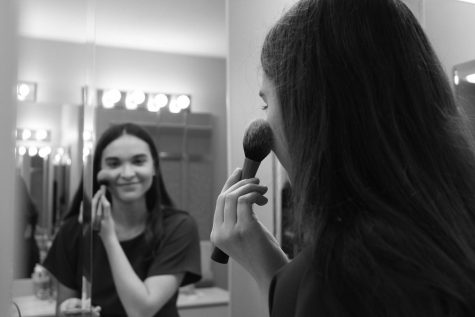Bridge the gap or you’ll fall through
I am a girl, and I did not wear a dress to Turnabout this year.
I’ll give you a second to overcome your horror now.
I’m kidding about the horror part … mostly. When I brought up my defiant plan with a friend, she responded with earnest encouragements. Honestly, I expected nothing less from my empathetic friends.
Even so, I couldn’t escape the pressures to adhere to feminine standards, the most daunting of which came from the same people who reassured me there would be no problem if I didn’t conform. One friend forgot about my decision and asked me if I had bought my Turnabout dress yet. Another invited me to get my nails painted with her before the dance, despite earlier mentions of my distaste for traditionally feminine activities. By Turnabout night, I found myself wearing a face caked with makeup, three-inch heels and a violet-colored jumpsuit. Discomfort boiled beneath my skin as I looked at myself in the mirror and saw someone I was not.
Don’t mistake my feelings as anger toward my friends. I’m thankful for their attempts to share their excitement for Turnabout with me. But the disconnect between their earlier acceptance of my gender nonconformity and their actions revealed a looming issue: an inability to bridge the gap between intention and practice.
This disconnect results in detrimental consequences. In the context of my Turnabout experiences, this gap created an environment that discouraged me from deviating from gender roles. The cause of the gap? When people don’t face hardships due to their privilege, such as girls like my friends who are comfortable with traditional femininity, they might not recognize how their words and actions make nonconformity terrifying.
Don’t believe that this gap is real in other contexts too? After a racially insensitive video circulated among students in December 2018, I saw some of the same white peers who had denounced the students’ usage of racist language later howl the n-word while rapping along to a Cardi B song — further evidence of the fracture between intent and action.
When will we recognize that despite our loudly proclaimed intentions, we still have problems with racism, homophobia and other forms of intolerance? The responsibility for bridging the gap by establishing a safe space for diverse identities rests in students’ hands.
Don’t be overwhelmed — I’m not forcing you to bear the weight of the world. These mindset shifts only require small steps. You can reframe your assumptions about gender by not expecting your friends to enjoy attire and activities correlated with traditional gender roles. You can educate yourself about the impacts of insensitive language that perpetuates harmful, untrue stereotypes. In your social studies class, you can study historical events through the lenses of marginalized groups to reap a fuller understanding of others’ experiences.
Just because I have experienced difficulty with embracing an unconventional gender expression doesn’t mean I don’t need to work on looking beyond the “Northbrook bubble” too. I’ve got one chance left to showcase who I truly am: Prom. I promise, I’ll bridge my own gap by rocking a suit without a flowing yet stifling dress hampering my strides.


